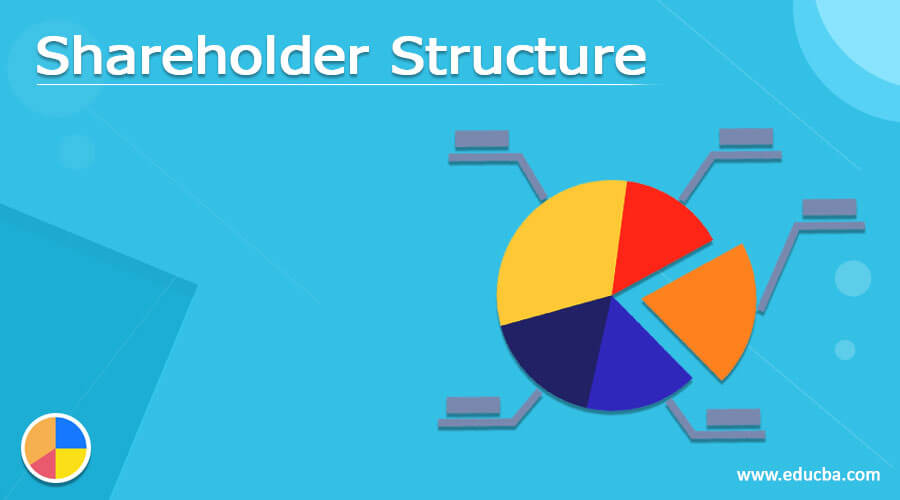Updated July 4, 2023
What is Shareholder Structure?
The term “shareholder structure” refers to the record-keeping of company shares classes at any given time. It also captures the number of shares, the percentage shareholding of each shareholder, and their voting rights.
In this way, it helps the management evaluate the ownership and decision-making control of the company based on the allocation of different classes of shares and their associated voting rights.
Key Takeaways
Some of the key takeaways of the article are:
- A shareholder structure is a representation of the different classes of shares issued by a company along with the number of shares or percentage of shareholding at any given point in time
- There are two main types – dual-class share structure and multi-class share structure.
- It helps the management diversify its ownership and decision-making power. Besides, it also helps distribute assets among the shareholders during the liquidation process of a company.
How does Shareholder Structure Work?
The shareholder structure report captures the classification of different class shares in a company, i.e., common equity shares, preference shares, convertible shares, ESOP, etc. The categories can also have further subclassification, such as preference shares may be broken down into preference shares with limited voting rights and those without any voting rights.
After the share classification, a shareholder structure then maintains the records of each shareholder with the number of shares or percentage shareholding held by them at the end of the accounting period. Besides, to capture the shareholders’ decision-making power, it also mentions their voting rights based on the share allocation.
In this way, a shareholder structure helps the management evaluate the company’s ownership and ascertain the shareholders’ decision-making power based on their share type allocation and associated voting rights.
Types of Shareholder Structure
The shareholders of a company are its owners, as they have purchased the company’s shares. However, not all shares offer the exact extent of ownership or decision-making powers captured in the shareholder structure. There are primarily two different types of shareholder structure that companies usually follow – dual-class share structure and multi-class share structure.
1. Dual-Class Share Structure
It tends to provide more decision-making powers to founders and management by offering them more profit-sharing and voting rights than ordinary shares. As such, it allows the administration to focus on their long-term goals without worrying about losing control of the company because of new shareholders.
2. Multi-Class Share Structure
This share structure has been rising in the last couple of years but still represents a small percentage of the overall market. In this type of share structure, a company issues many different classes of shares, i.e., shares with preferential dividends but no voting powers. Essentially, it helps a company raise funds without diluting the decision-making rights of the management. Some the countries like Singapore and Hong Kong don’t allow a multi-class share structure.
Example Template for Shareholder Structure
Let us look at the following example to understand the concept of shareholder structure.
ASD Inc. has 100,000 outstanding shares of different classes, equity shares, preference shares, ESOP, and convertible equity shares. There are many shareholders under other types of shares, and each of them enjoys different voting rights based on their share class. The promoters of the business kept 50% of the shares while retaining 75% of the voting rights. The preference shareholders enjoy no voting rights, while owners of ESOPs and convertible equity shares have voting rights lower than their percentage shareholding. For more details, refer to the template shareholder structure provided below.
| Class of Shares | Shareholder Name | No. shares held | % of holding | % of voting right |
| Equity Shares | Person E1 | 15,000 | 15% | 22.5% |
| Person E2 | 15,000 | 15% | 22.5% | |
| Person E3 | 20,000 | 20% | 30.0% | |
| Preference Shares | Person P1 | 5,000 | 5% | 0.0% |
| Person P2 | 3,000 | 3% | 0.0% | |
| ESOP | Person ES1 | 6,000 | 6% | 3.0% |
| Person ES2 | 7,000 | 7% | 3.5% | |
| Person ES3 | 7,000 | 7% | 3.5% | |
| Convertible Equity Shares | Person C1 | 6,000 | 6% | 4.0% |
| Person C2 | 8,000 | 8% | 5.5% | |
| Person C3 | 8,000 | 8% | 5.5% | |
| Total | 100,000 | 100% | 100.0% |
Shareholder Structure Chart
A typical shareholder structure chart of a company is a pictorial representation of the various stakeholders owning the business. It may include the holding company with more than 50% of the shares, promoters, government, other companies, and public holdings. A sample shareholder structure chart has been provided below for better understanding.
Advantages of Shareholder Structure
Some of the significant advantages are as follows:
- It helps the management diversify its company’s ownership while not giving away the group control or decision-making power.
- It helps the management distribute the remaining assets among the shareholders as per their ownership during the liquidation process.
Disadvantages of Shareholder Structure
Some of the major disadvantages are as follows:
- It can make the owners of share classes with limited rights feel pretty inconsequential in the overall company setup.
- The companies lure investors into raising capital without offering them any say in decision-making.
Conclusion
It is a valuable management tool for keeping track of a company’s ownership and managing its decision-making power. In other words, it helps retain the decision-making power in the hands of the management so that they can focus on achieving the company’s long-term goals without worrying about hindrances in the company’s decisions.
Recommended Articles
This is a guide to Shareholder Structure. Here we also discuss the definition, working, types, examples, and chart, along with advantages and disadvantages. You may also have a look at the following articles to learn more –


